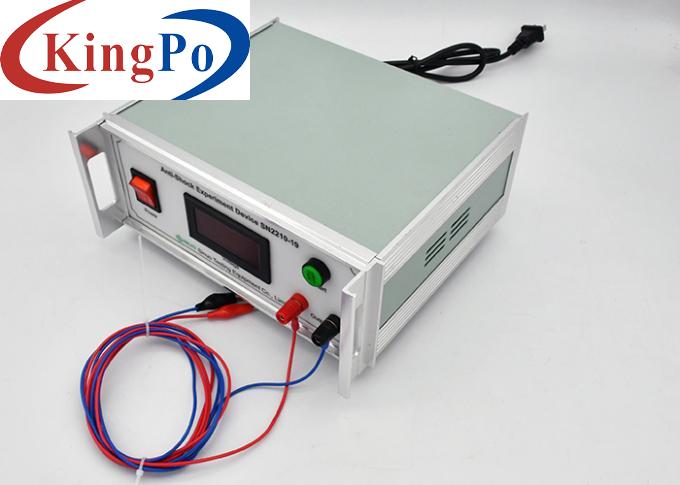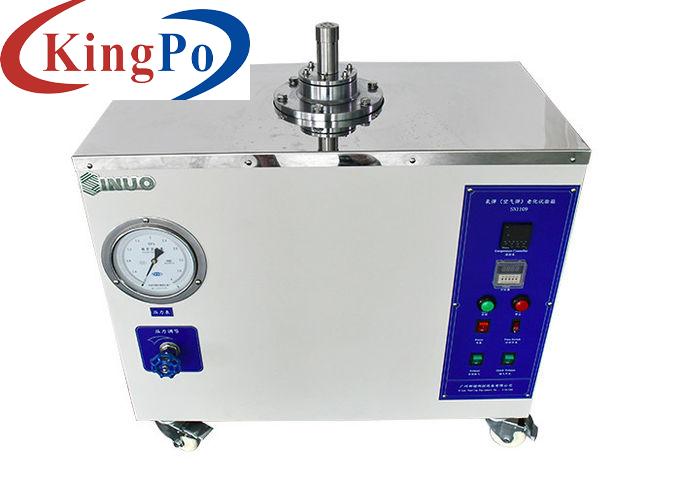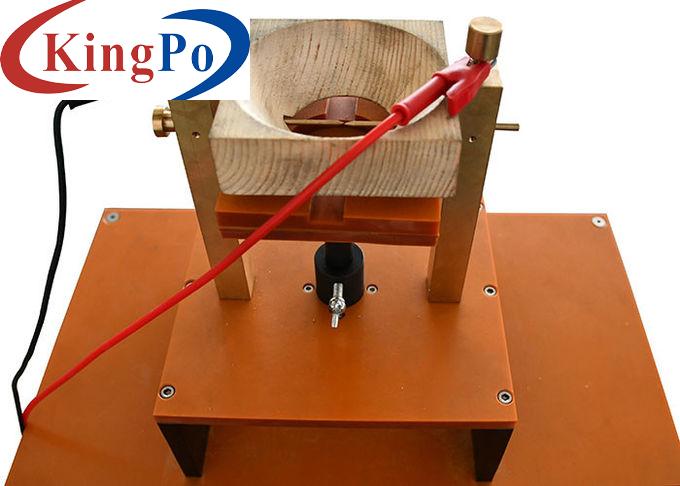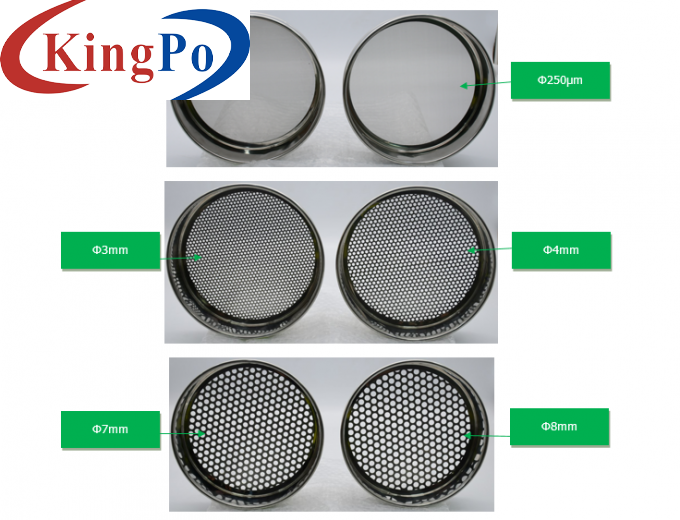Products

IEC 60335-1 Anti-Shock Probe Experiment Device Used With The Testing Probe
Products Description
IEC 60335-1 Anti-Shock Probe Experiment Device Used With The Testing Probe
Product Information:
This anti-shock probe experiment device is designed and manufactured meet the requirements of the standard of IEC60335-1 Clause 8.1.4, IEC 60065:2014 clause 9.1.1.2, and etc. It is used together with the testing probe for checking whether the probe can contact the live parts of electrical appliance, to verify the protection of persons against access to hazardous parts inside the enclosure.
Features:
An anti-shock probe experiment device, also known as an electric shock test device or electrical safety tester, is a specialized apparatus used to evaluate the electrical safety of electrical equipment or devices. These devices are designed to simulate various electrical fault conditions and assess the ability of the tested equipment to withstand or mitigate the risk of electric shock. Here are some key features and functions commonly found in anti-shock probe experiment devices:
Voltage Generation: The device generates electric voltages of specific magnitudes, typically ranging from a few volts to several kilovolts. This allows for the simulation of different voltage levels that may pose a risk of electric shock.
Current Limiting: To ensure safety during testing, the device incorporates current-limiting mechanisms to restrict the flow of electric current. This helps prevent excessive current from flowing through the test specimen and potentially causing damage or injury.
Test Probes: Anti-shock probe experiment devices are equipped with various types of test probes or electrodes that simulate human body contact points. These probes typically mimic the shape and characteristics of human fingers or other body parts to evaluate the risk of electric shock.
Test Modes: The device offers different test modes to assess the electrical safety of the equipment being tested. These modes may include touch current measurement, leakage current measurement, insulation resistance testing, ground bond testing, and more.
Safety Interlocks: Anti-shock probe experiment devices often incorporate safety interlock features to ensure that the testing process is conducted safely. These interlocks may include emergency stop buttons, safety shields, and mechanisms to prevent accidental contact with hazardous voltages.
Compliance with Standards: The devices are designed to comply with relevant safety standards, such as the International Electrotechnical Commission (IEC) 60335 series or the International Safety Standards for Information Technology Equipment (IEC 60950). Compliance ensures that the testing process is conducted according to established guidelines and provides reliable and repeatable results.
Anti-shock probe experiment devices are commonly used by manufacturers, testing laboratories, and regulatory bodies to verify the electrical safety of electrical equipment before it is released to the market. These devices help ensure that products meet safety standards and regulations, minimizing the risk of electric shock to users and ensuring electrical safety in various applications.
Technical Parameters:
Notice:
1. Check whether connecting wires are conductive.
2. Please do not place two connecting wires on same metal part, so as to avoid the formation of the circuit and error alarm.
3. Be careful of electric shock.
2. Then turn on the POWER switch, use the test finger probe to touch other parts of the electrical appliance.
3. If test finger probe touches a live part, electrical contact indicator alarm, buzzer sound, indicating the touched part is a live part, or it is not.
4. Press RESET button to stop alarm and cut off the power supply.
For the two output electrodes, one of electrodes is connected with the energized part of the electrical appliance and the other electrodes is connected with the input terminal of the probe used. Then turn on the POWER switch of the device, and use the probe to touch the parts that maybe electrified. If the alarm of the equipment sounds, it is proved that the testing part is electrified. Then press the button of reset and cut off the circuit.
Applied standard
IEC60335-1
Applied clause
Clause 8.1.4
Working voltage
AC 220V±10%, 50HZ±1%
Electrode output the testing voltage
AC40-50V
Working temperature
0-40
Relative humidity:
≤80%
Environment
No shaking and no corrosive gas







